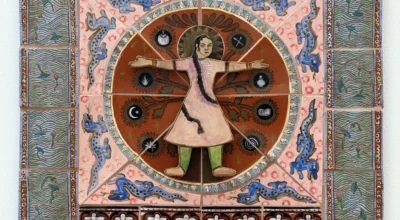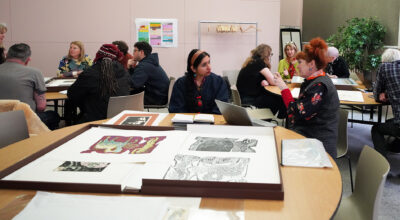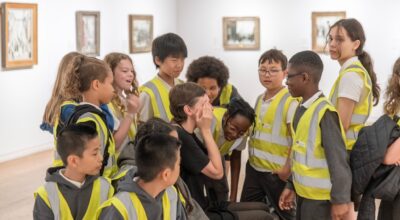We have recently welcomed Anna Riggs to the Gallery as Archive Officer. This new role has been made possible with an Archives Revealed grant from The National Archives.
So, what does an Archivist do? And how will Anna’s work have an impact on the Gallery?
Anna says: “An archivist manages historic records, preserving them and cataloguing them so that they can be accessed and used. They can be paper archives, but today they are a mixture of paper and digital”.
Anna has started by producing an Archives Collecting Policy and Retention Schedule which clearly details what we need to keep, either for a limited time or in perpetuity. It also helps the organisation to think about what format material is kept in.
Anna says “It’s important to keep multiple versions of documents in different places which protects against fire and water damage, and we need to keep up to date with technological changes, migrating through new versions of software. The pace of technology and of digital communication sets challenges for Archivists, particularly the changes in the use of social media.”.
What made Anna decide to train as an Archivist?
Anna’s experience proves the importance of involving young people behind the scenes in museums and galleries, something Manchester Art Gallery does regularly. “An old friend of my family was the Archivist at Oxford University Press. I did work experience with her and it went from there”.
She says that what fascinated her was finding out how history is written and how you extract the information from primary sources. “That’s real research” she says.
What’s the best thing about being an Archivist?
“Archives never fail to surprise” says Anna. As she sifts through lots of interesting historical material there’s every chance that a new story will be revealed. Manchester Art Gallery is no exception. “I knew such a fascinating place would have a great archive – and I was right!”
So what has she discovered so far?
The MAG archive is extensive, documenting 200 years of collecting for Manchester. “There’s letters (and now emails), books of press cuttings, catalogues, collection research, records of events and exhibitions – and lots of photographs!”
Anna has found the photographs particularly interesting, many of which she says are very beautiful. “There is an album of photographs of glassmakers at work in the Whitefriars glassworks that I really loved. There are beautiful photographs of Wythenshawe Hall taken by a community group in 2008”.
How will Anna’s work help the gallery in the future?
“I hope the project will allow the Gallery to make more use of its archive” Anna says. She is also creating digital records so that everything is preserved for future use and more accessible. Anna’s work will also create a great foundation for future work, with procedures that ensure the Gallery continues to robustly record its history for another 200 years.



